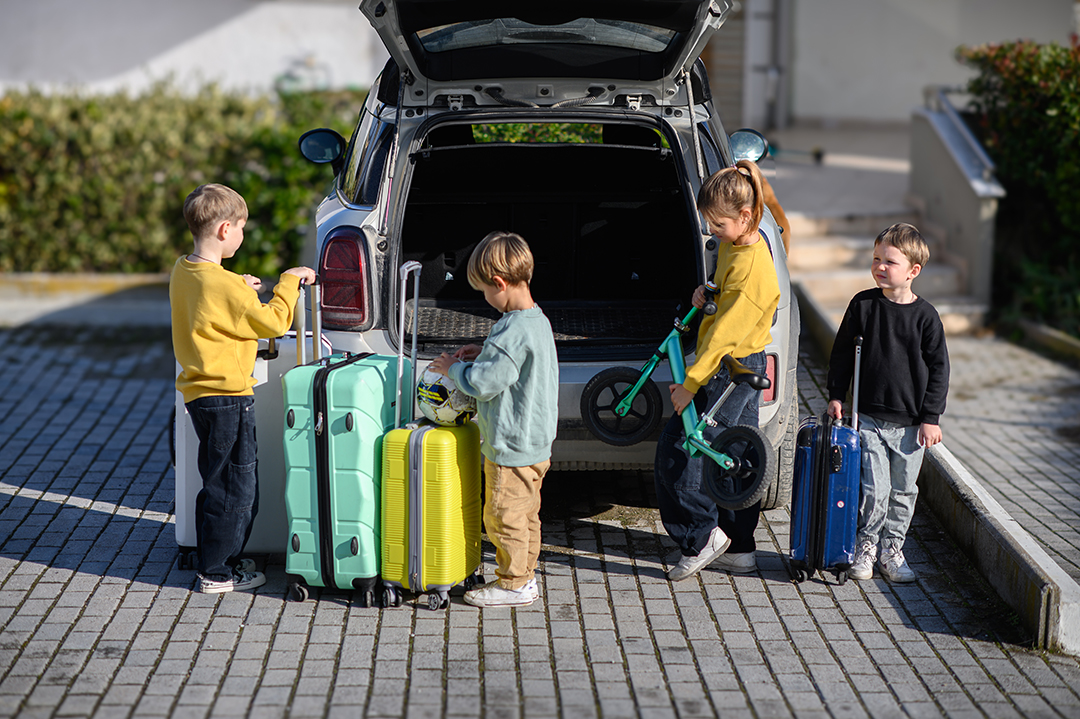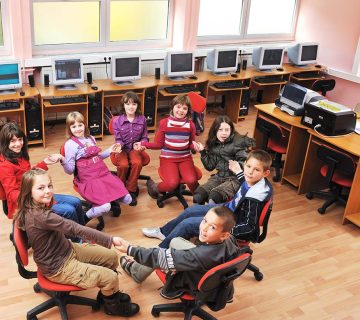Traveling with children is a unique and exhilarating experience that can create lasting, joyful memories for families. By exploring new destinations, encountering different cultures, and participating in fresh activities, children stimulate their cognitive and emotional growth. However, traveling with kids comes with its own set of challenges: from meticulous scheduling to ensure the child’s well-being, to handling disrupted eating habits and jet lag. In this article, we discuss the significance of traveling with children, common hurdles families face on the road, planning strategies, and practical tips to reduce stress for both parents and children. The goal is to help parents transform a potentially stressful journey into a smooth, rewarding family adventure.
1. The Importance of Traveling with Children
1.1. Enhancing Social and Emotional Development
Travel exposes children to environments beyond their daily routines, enabling them to:
-
Social Skills: Interact with peers and adults in airports, planes, or local attractions, thereby boosting communication abilities and self-confidence.
-
Independence: Learn to pack their belongings, choose meals, or manage personal hygiene, fostering self-reliance.
-
Empathy and Cultural Understanding: Experience unfamiliar foods and local customs, promoting acceptance of differences and compassion for others.
1.2. Experiential Learning
Travel serves as a hands-on classroom, offering lessons that textbooks cannot replicate:
-
Museum and Zoo Visits: Observing wildlife or historical artifacts deepens scientific and historical comprehension in a memorable way.
-
Local Cooking: Participating in a cooking class or observing how local dishes are prepared gives insight into regional culinary traditions.
-
Informal Language Exposure: Hearing the local language in markets or streets exposes children to new words and encourages them to mimic phrases, enhancing language skills.
1.3. Creating Lasting Family Memories
Shared travel experiences strengthen family bonds:
-
Distraction-Free Interaction: Being away from screens allows for meaningful conversations and play, nurturing emotional connections.
-
Capturing Memorable Moments: Family photos at scenic spots or during unique experiences become treasured keepsakes that last a lifetime.
2. Common Challenges When Traveling with Children
2.1. Time Management and Scheduling
-
Irregular Sleep Patterns: Crossing time zones or adjusting to different daylight cycles can disrupt a child’s sleep, causing insomnia or excessive fatigue.
-
Balancing Activity Levels: Energetic children may feel restless in crowded spaces like airports or markets. Parents should alternate between active exploration and periods of calm to maintain balance.
-
Long Travel Durations: Extended flights or drives can bore children. Scheduling frequent breaks, providing in-transit games, or playing child-friendly videos can help pass the time.
2.2. Nutrition and Caloric Needs
-
Introducing New Foods: Some children may be averse to unfamiliar local dishes or experience digestive upset. Packing familiar, portable snacks—such as dried fruit, whole-grain crackers, or bananas—ensures stable blood sugar levels.
-
Food Allergies: Parents should prepare a list of permissible foods and carry antihistamines or other prescribed medications for allergic reactions.
-
Hydration: Changes in climate and increased activity heighten the need for adequate fluid intake. Parents must remind children to drink water regularly.
2.3. Health and Safety Considerations
-
Vaccinations and Medical Records: Before visiting specific regions, families should verify that needed immunizations are current and pack preventive medications (e.g., for malaria) as advised by a pediatrician.
-
Minor Injuries: Exploring the outdoors may result in minor cuts or sprains. A well-stocked first-aid kit—bandages, antiseptic ointment, age-appropriate pain relievers—can manage small emergencies.
-
Safety Equipment: Proper child car seats and seat belts are mandatory during road travel. In aviation, using a child safety harness or approved seat ensures the child’s protection.
2.4. Emotional and Behavioral Management
-
Fear of New Places: Some children may feel anxious or scared in unfamiliar surroundings (e.g., a bustling fairground or a large museum exhibit). Parents should calmly explain what to expect and provide reassurance.
-
Restlessness and Fatigue: Spending too many hours sightseeing can exhaust children. Scheduling regular downtime or quiet activities helps maintain their energy and mood.
-
Emotional Outbursts: Sudden mood changes—tears or irritability—often stem from hunger, dehydration, or sleep deprivation. Parents must be attuned to these signals and address them promptly.
3. Planning a Trip with Children
3.1. Choosing a Child-Friendly Destination
-
Shorter Travel Distances: For young children, routes under three hours with regular breaks are preferable to minimize fussiness.
-
Family-Oriented Accommodations: Hotels or resorts offering child-friendly amenities—like shallow pools, playgrounds, or kid’s clubs—provide parents with peace of mind and children with safe entertainment.
-
Seasonal and Climate Considerations: Traveling in mild seasons reduces the risk of heatstroke or common colds. Pack appropriate layers—light clothing for warmth, hats for sun protection, or light jackets for cooler climates.
3.2. Preparing an Essential Packing Checklist
-
Documents and Identification: Birth certificates, passports, parental consent letters (if required), and any medical records.
-
Appropriate Clothing: Layered outfits for variable weather, comfortable shoes, sun hats, and lightweight jackets.
-
Personal Care Items: Diapers for toddlers, wet wipes, child-friendly sunscreen, toothbrush and toothpaste for kids, multivitamins if prescribed, and age-appropriate medicines.
-
Snacks and Drinks: Portable snacks—dried fruit, whole-grain biscuits, or dates—keep blood sugar steady.
-
Entertainment for Transit: Small coloring books, washable markers, a favorite toy or stuffed animal, and child-friendly headphones for watching cartoons.
-
First-Aid Kit: Include bandages, sterile gauze, antiseptic ointment, age-appropriate pain relievers (such as paracetamol or ibuprofen in pediatric doses), and insect-repellent spray for outdoor activities.
3.3. Crafting a Flexible Daily Itinerary
-
Morning Excursions: Start early with visits to attractions like parks, zoos, or interactive museums. Early hours often mean fewer crowds and fresher children.
-
Lunch and Rest: After a few hours of exploration, break for lunch and schedule a 30–60-minute rest or nap. A restful pause prevents fatigue in the afternoon.
-
Afternoon Low-Intensity Activities: If the morning included a strenuous activity (hiking or a large museum), follow with gentler experiences like strolling through scenic areas or light courtyard games.
-
Bedtime Routine: Maintain a consistent bedtime analogous to the child’s home routine. If crossing time zones, allow 2–3 days of adjustment with earlier or later bedtimes as needed.
4. Practical Tips to Reduce Stress for Parents and Children
4.1. Maintaining Calm and Positive Mindset
-
Realistic Expectations: Understand that not every day will go according to plan. Flexibility is key to enjoying the journey.
-
Laughter and Play: A lighthearted joke or a silly song can quickly diffuse a tense moment and boost everyone’s mood.
4.2. Strengthening Bonding During the Journey
-
Storytelling: Narrate short, engaging tales—folk legends of the destination or imaginative stories—to keep the child’s attention and foster excitement.
-
Interactive Games: Simple games like “I Spy” or a scavenger hunt for colored objects around an airport keep children entertained and involved.
4.3. Fostering Children’s Independence
-
Involving Them in Packing: Ask children to pack some of their personal items (toys, clothes). This practice teaches responsibility and helps them understand travel necessities.
-
Limited Choices: Give children a small selection (two or three) of toys or snacks to choose from. By controlling options, you reduce decision-making stress and avoid arguments over packing.
4.4. Handling Emergency Situations
-
Identification Cards: Prepare a small card with the child’s name, parent contact number, and any allergies. Keep it in the child’s pocket or a visible location.
-
Preplanned Meeting Spots: In crowded places—shopping centers, amusement parks—designate a specific landmark for regrouping if anyone gets separated.
-
Embassy or Consulate Contacts (for International Travel): Note down the nearest embassy or consulate phone numbers and addresses in case of passport loss or other emergencies.
5. Scenario Examples and Success Stories
5.1. Scenario: Short Road Trip with Preschoolers
-
Issue: Sara (age 4) becomes restless during a three-hour car ride and repeatedly asks to stop.
-
Parental Solution:
-
Schedule stops every hour for a 10-minute break where Sara can run around a rest area or park.
-
Pack variety of snacks—dried fruit, whole-grain crackers, dates—to keep her blood sugar stable.
-
Play an engaging audio story for the first 30 minutes to capture her attention and distract from the monotony of the road.
-
5.2. Scenario: International Flight with School-Aged Children
-
Issue: Behzad (age 9) is irritable and tired because he didn’t get enough sleep before boarding a morning flight.
-
Parental and Travel Companion Solution:
-
Switch to an evening flight the night before to allow Behzad sufficient rest.
-
Provide an in-flight entertainment kit—including a small coloring book, puzzles, and kid-friendly headphones preloaded with cartoons.
-
Encourage a brief walk up and down the aisle before takeoff to improve circulation and reduce stiffness.
-
5.3. Scenario: Cold-Weather Destination
-
Issue: Mahsa (age 7) cries and complains of being too cold upon arrival in a snowy region.
-
Parental Solution:
-
Before departure, have Mahsa try on each winter garment—coat, gloves, hat—to ensure it fits comfortably.
-
Pack a set of thermal layers and woolen socks to keep her warm during outdoor activities.
-
Schedule a short indoor activity—like a drawing session or completing a simple puzzle—to help her body warm up before going out again.
-







